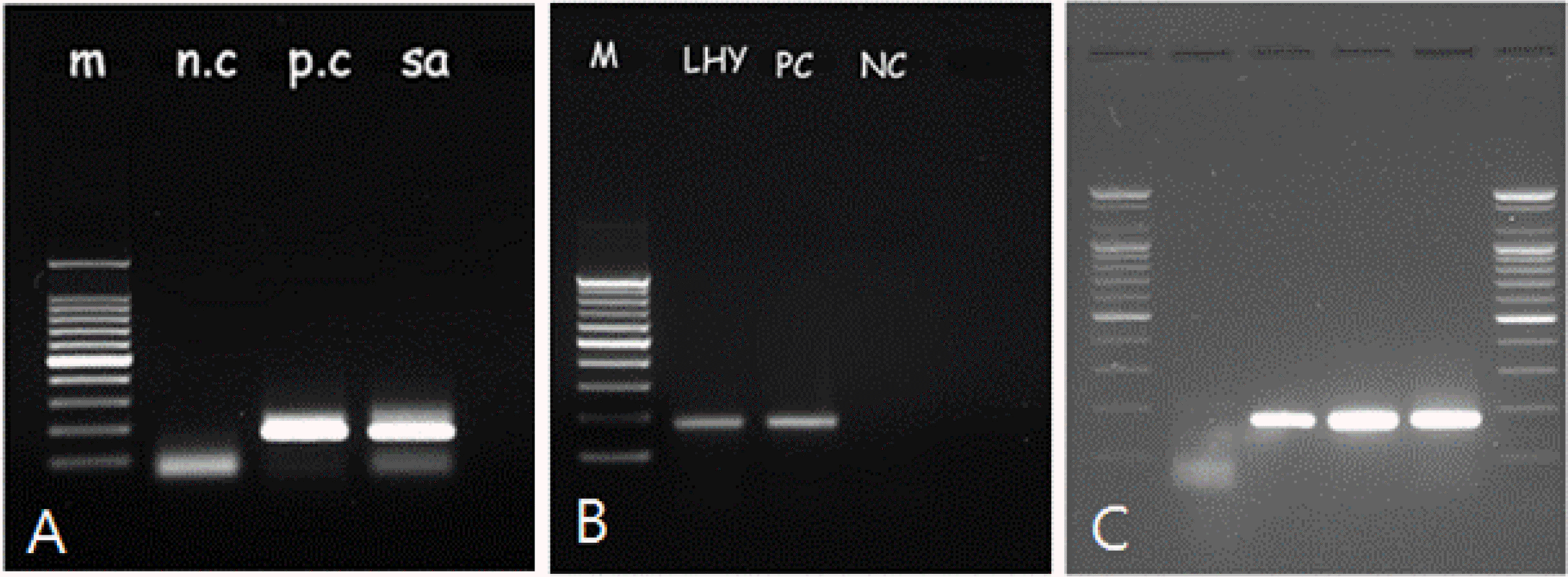Abstract
Pertussis is a pediatric infectious disease with one of the highest degrees of infectivity. Although pertussis may cause asymptomatic infections in children and adults with immunity, it can cause life-threatening diseases in newborn babies or infants. We report three cases of pertussis in infants ˂ 3 months of age without DTaP immunization who have received symptomatic treatment with the diagnosis of bronchiolitis from other hospitals, and subsequently correctly diagnosed and treated. The patients did not have the characteristic whooping cough, but the main symptoms were episodic cough, intermittent vomiting, and cyanosis. Based on culture results for Bordetella pertussis and PCR, pertussis was diagnosed and treated without any complications. As it is assumed that adults, adolescents, and asymptomatic patients may serve as sources of infection, immunization with Tdap vaccine is recommended to prevent dissemination of pertussis from adolescents and adults to infants, and thus maintain herd immunity.
References
1. Cherry JD, Heininger U. Pertussis and other Bordetella infections. Feigin RD, Cherry JD, Demmler-Harrison GJ, Kaplan SL, editors. editors.Feigin and Cherry's textbook of pediatric infectious diseases. 6th Ed.Philadelphia: Saunders Co;2009. p. 1683–706.

2. Tan T, Trindade E, Skowronski D. Epidemiology of pertussis. Pediatr Infect Dis J. 2005; 24(Suppl 5):10–8.

4. Department of Vaccines and Biologicals, World Health Organization. WHO-recommended standards for surveillance of selected vaccine -preventable diseases. Geneva: WHO;2003. p. 28–30.
5. Heininger U, Stehr K, Cherry JD. Serious pertussis overlooked in infants. Eur J Pediatr. 1992; 151:342–3.

6. Cherry JD, Grimprel E, Guiso N, Heininger U, Mertsola J. Defining pertussis epidemiology: clinical, microbiologic and serologic perspectives. Pediatr Infect Dis J. 2005; 24(Suppl 5):25–34.
7. Park WB, Park SW, Lee KD, Lee CS, Jang HC, Kim HB, et al. Pertussis as a differential diagnosis of chronic cough in adults. Infection and Chemotherapy. 2004; 36:331–4.
8. Senzilet LD, Halperin SA, Spika JS, Alagarat-nam M, Morris A, Smith B, et al. Pertussis is a frequent cause of prolonged cough illness in adults and adolescents. Clin Infect Dis. 2001; 32:1691–7.

9. The Korean Pediatric Society. DTaP, Td vaccination. Lee HJ, editor. Immunization Guideline. 6th. The Korean Pediatric Society;2008. p. 81–2.
10. Centers for Disease Control and Prevention. Scheduled for persons aged 0 through 18 years: United States, 2009. MMWR. 2009; 57:51–2.
11. Department of Vaccine and Biologicals, World Health Organization. Pertussis surveillance: a global meeting Geneva, 16–18 October 2000. Geneva: WHO;2001. p. 28–30.
12. Tanaka M, Vitek CR, Pascual FB, Bisgard KM, Tate JE, Murphy TV. Trends in pertussis among infants in the United States, 1980–1999. JAMA. 2003; 290:2968–75.

13. Munoz FM. Pertussis in infants, children, and adolescents: diagnosis, treatment, and prevention. Semin Pediatr Infect Dis. 2006; 17:14–9.

14. Akari Nakamura, Takashi Sakano, Tetsuo Nakayama, Shimoda H, Okada Y, Hanayama R, et al. Neonatal pertussis presenting as acute bronchiolitis: direct detection of the Bordetella pertussis genome using loop-mediated isothermal amplification. Eur J Pediatr. 2009; 168:347–9.

15. Kamachi K, Toyoizuumi-Ajisaka H, Toda K. Development and evaluation of a loop-mediated isothermal amplification method for rapid diagnosis of Bordetella pertussis infection. J Clin Microbiol. 2006; 44:1899–1902.
16. Langley JM, Halperin SA, Boucher FD. Azithromycin is as effective as and better tolerated than erythromycin estolate for the treatment of pertussis. Pediatrics. 2004; 114:e96–e101.

17. Hoppe JE, Bryskier A. In vitro susceptibilities of Bordetella pertussis and Bordetella parapertussis to two ketolides(HMR 3004 and HMR 3647), four macrolides(azithromycin, clarithromycin, erythromycin A, and roxithromycin), and two ansamycins(rifampicin and rifapentine). Antimicrob Agents Chemother. 1998; 42:965–6.
Fig. 1.
Detection of B. pertussis by polymerase chain reaction. (A) Lane 1, 100bp DNA ladder; Lane 2, Negative control; Lane 3, Positive control(B. pertussis); Lane 4, case 1 sample (B) Lane 1, 100bp DNA ladder; Lane 2, case 2 sample; Lane 3, Positive control; Lane 4, Negative control (C) Lane 1, 100bp DNA ladder; Lane 2, Negative control; Lane 3, Positive control; Lane 4, case 3 sample, Lane 5, case 3 sample

Table 1.
Clinical Details of One Neonate and Two Infant with Pertussis




 PDF
PDF ePub
ePub Citation
Citation Print
Print


 XML Download
XML Download